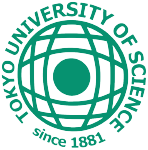Abstract
In this work, we provide a -generalization of flexible algebras and related bialgebraic structures, including center-symmetric (also called anti-flexible) algebras, and their bialgebras. Their basic properties are derived and discussed. Their connection with known algebraic structures, previously developed in the literature, is established. A -Myung theorem is given. Main properties related to bimodules, matched pairs and dual bimodules as well as their algebraic consequences are investigated and analyzed. Besides, the equivalence between -generalized flexible algebras, their Manin triple and bialgebras is established. Finally, various remarkable identities are established for the octonion algebra.
Funding Statement
This work is partially supported by TWAS Research Grant RGA No.17-542 RG /MATHS /AF/AC GFR3240300147. The ICMPAUNESCO Chair is in partnership with the Association pour la Promotion Scientifique de l’Afrique (APSA), France, and Daniel Iagolnitzer Foundation (DIF), France, supporting the development of mathematical physics in Africa.
Acknowledgments
The authors thank the referees for their useful comments which allow to improve the paper.
Citation
Mahouton Norbert Hounkonnou. Mafoya Landry Dassoundo. "-generalized (anti -) flexible algebras and bialgebras." SUT J. Math. 56 (2) 71 - 92, December 2020. https://doi.org/10.55937/sut/1610363822
Information





